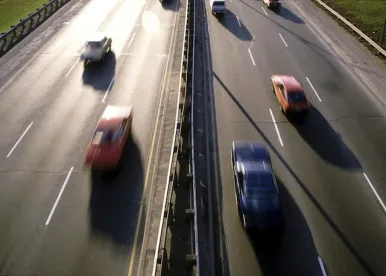Trucking companies are not always notified when a driver is arrested for drugs.
For example, recently, a truck driver was arrested after police found him unconscious in his rig. He admitted that he had used heroin. Because he was not in the cab with the keys in the ignition, he was not charged with operating a vehicle while intoxicated.
Although he was charged with disorderly conduct while intoxicated, the trucking company that employed him was not informed of the charge, nor was the state that issued his commercial driver’s license.
Ten days later, he renewed his CDL. A couple of weeks after that, he jackknifed his rig, after overdosing on heroin. Emergency workers used naloxone to revive him.
Truck Drivers, Prescription Drugs, and the Opioid Crisis
Illegal drugs were detected in more than 40 percent of fatally injured drivers for whom test results were available, according to a report released by the Governors Highway Safety Association, based on 2015 data. The Health Insurance Portability and Accountability Act, a federal law that protects patient privacy, often acts to prevent trucking companies from being informed when drivers are prescribed a medication that might make it unsafe to operate a truck.
In addition, the opioid crisis, arising from addiction to prescription opioids, has impacted the trucking industry. Truckers who become addicted to legal prescriptions for Oxycontin, Percocet, and generic opioids have been replacing those legal prescriptions with heroin when the prescriptions are no longer available.
Are Random Drug Tests of Truck Drivers Enough?
The Federal Motor Carrier Safety Administration (FMCSA) regulates drug testing in commercial trucking. States enforce compliance.
Currently, drivers are subject to drug testing in these circumstances:
-
Pre-employment – New CDL drivers must be drug tested with a negative result before an employer can permit them to operate a CMV on a public road.
-
Post-Accident – CDL drivers must be drug and alcohol tested whenever they are involved in a fatal accident, or receive a traffic citation resulting in an injury or vehicle-disabling accident.
-
Random Testing – CDL drivers are subject to unannounced random drug testing, even when at home in an off-duty status. Random alcohol testing may only occur when the driver is on-duty or immediately before or after. Once notified to report for random testing, the driver must immediately report to the testing location. A delayed arrival may be considered a refusal, which is equivalent to testing positive.
-
Reasonable Suspicion – DOT-trained supervisors can direct a driver to be drug or alcohol tested whenever he or she exhibit signs of drug or alcohol abuse.
-
Return-to-Duty – Return-to-duty tests are required after an employee has completed the “return-to-duty” process, before returning to perform a safety sensitive function (i.e., driving CMVs).
-
Follow-Up – Follow-up drug and alcohol tests are required, as prescribed by the substance abuse professional (SAP) who signs the return-to-duty report. They consist of a minimum of at least six unannounced directly observed tests conducted during the first 12 months following the return-to-duty test. The SAP can prescribe follow-up testing for a maximum of five years for drivers who have tested “positive” or “refused to test.” Follow-up testing is in addition to any selections for random testing.
How do Truck Drivers’ Drug Arrests Slip Between the Cracks?
Communication between federal agencies, which set the rules for trucking companies, and the state agencies that are responsible for enforcing the rules, may affect both notification and compliance.
A crucial issue is that there is no federal requirement that state agencies inform each other or the trucking companies about a driver’s drug or alcohol arrests. Drivers are required to tell the trucking company that employs them about an arrest, but that doesn’t often happen. State motor vehicle agencies may inform one another but that does not always occur. Without that communication, a moving violation – or operating under the influence charge – may not appear on the driver’s license record.
As for federal oversight, the FMCSA does not track driver arrests.
Commercial Drivers’ License (CDL) and Drug Clearinghouse
Random drug tests are just that – although a company may test more than the federally-required 25 percent of drivers, any individual driver may go for years without being drug tested.
In 2012, Congress ordered the Department of Transportation to create a Commercial Driver’s License Drug and Alcohol Clearinghouse. The National Drug and Alcohol Clearinghouse “Final Rule” goes into effect in January 2020.
The clearinghouse database will be a central repository containing records of violations of FMCSA’s drug and alcohol testing program by commercial driver’s license (CDL) holders. Employers will be required to query the system for information concerning current or prospective employees who have unresolved violations of the federal drug and alcohol testing regulations that prohibit them from operating a commercial motor vehicle. The rule also requires employers and medical review officers to report drug and alcohol testing program violations.
This Rule should increase compliance by removing some of the communication barriers to keeping the trucking industry drug-free and increasing safety on the roads. Drug use combined with 80,000 pound tractor-trailers do not mix.



 />i
/>i

